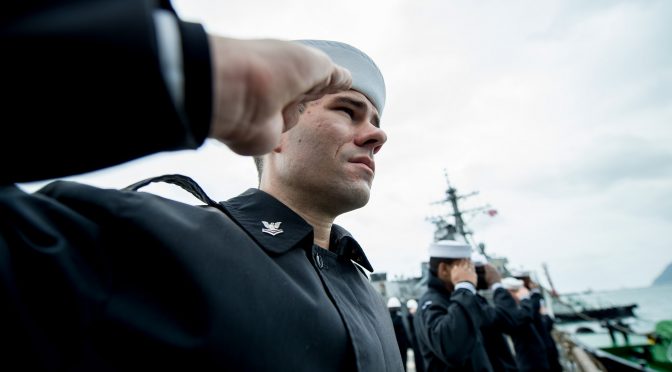By The Navy League
The United States is irrevocably tied to the ocean and its international and domestic waterways militarily, economically, and politically. Since its founding, America’s prosperity has relied on freedom of the seas. The world looks very different today, but keeping conflict far from our shores and maintaining sea lanes free and open to commerce remain the underlying reason for the prosperity of the United States. America’s Navy must be supported if the U.S. is to continue to reap the benefits of international trade which the American economy rests upon.
It is imperative that the United States maintain naval forces that can sustain our national commitment to global maritime security. The biggest impediment to maintaining that force is the lack of a fully funded shipbuilding program that produces the right quantity and quality of ships, with the right capabilities, for the right price. A shipbuilding plan must support the industrial base and ensure we have the capability to surge shipbuilding when needed. Rising great power contention threatens freedom of navigation, and we must ensure we have the capability and capacity to reassure our allies and friends that freedom of the seas remains is a priority. Freedom of the seas underpins both our security and our prosperity.
The Navy is under severe stress after years of high operational tempo that has exhausted sailors, their families, and the platforms they depend on. Combatant commanders keep the Navy in high demand. It is crucial that our Navy is funded at a level that reflects their importance to our national security footing.
We support:
- Fully funding a fleet of 355 ships, including the funding of the Columbia-class ballistic missile submarines through the National Sea-based Strategic Deterrent Fund.
- Continued full funding of the Virginia-class fast attack submarine at two or three ships per year, including fully funding the SSN Virginia Payload Modules required to offset the strike capability lost when the four SSGNs are decommissioned.
- Increasing the aircraft carrier requirement to 12—we are, as Admiral Moore said, “an 11-carrier Navy in a 15-carrier world.”
- The Navy’s efforts to upgrade the quality and scope of mine countermeasures capabilities.
- Increased emphasis on anti-submarine warfare in the face of an increasing threat.
- Adequate numbers of Navy amphibious ships and sealift platforms to provide the expeditionary lift to support present and future combatant commander requirements.
- Procurement of sufficient weapons and munitions to meet Operation Plan requirements.
- Protecting readiness.
The Navy League of the United States is a nonprofit, nonpartisan civilian advocacy and service organization with more than 42,000 members and 220 councils in the United States and around the world. The Navy League supports all the sea services — the U.S. Navy, Marine Corps, Coast Guard and U.S.-flag Merchant Marine — that ensure the United States remains a strong maritime nation.
Featured Image: BUSAN, Republic of Korea (Oct. 21, 2016) Petty Officer 2nd Class James M. Jones, from Clermont, Fla., renders honors while manning the rails of the forward-deployed Arleigh Burke-class guided-missile destroyer USS Barry (DDG 52) as the ship departs the Republic of Korea (ROK) Fleet base in Busan following a scheduled port visit. (U.S. Navy photo by Petty Officer 2nd Class Kevin V. Cunningham/Released)

